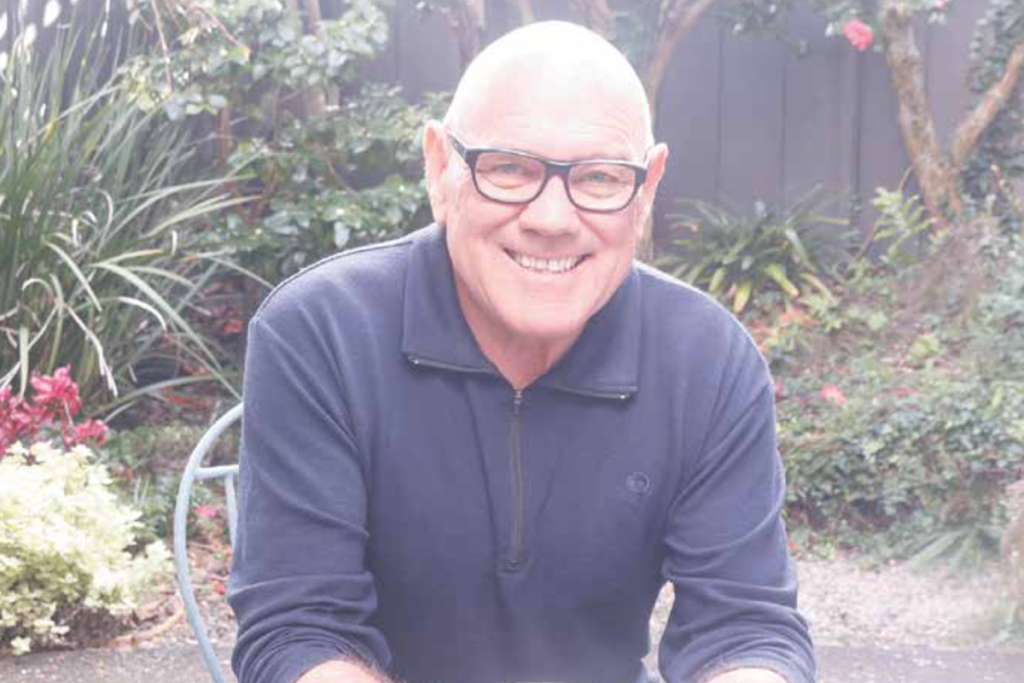What's New
15 September, 2021
TV investigator uncovers peninsula pleasures
David Lomas is well known for TV shows that fill in the missing pieces of people’s lives. He talks to Helen Vause about his own life, including his enjoyment of beach life.

When David Lomas was a boy playing ice hockey in Wellington, he wondered if his sport could get a mention alongside all the others in the sports pages of the city’s newspapers.
So the sports-mad 13-year-old thought he’d have a crack it making it happen. After his Saturday ice hockey game, he’d race home, write up the results, then whip into the city on his bike, story in hand.
His older brother was a junior newspaper-man, so when young Lomas arrived at the front of the Evening Post offices, he knew what to do with his story.
He’d just pop it into the special box out front where all the other seasoned sports-report contributors would also leave their work.
The newspaper ran the first story he submitted – and all the others that he faithfully delivered after his weekend games.
Not long after that, the editor tracked him down and sent him a cheque for his efforts, encouraging him onto the first rung of what became a long media career. When they began putting his name on his ice-hockey reports, that really set the ink running in his veins.
“I was pretty tickled to see my name out there in print,” he chuckles.
Decades later, sport and storytelling are still very much his passion. Lomas talked to the Flagstaff about a media life that’s in recent years made him a well-known name as the presenter of TV shows, notably Lost and Found, in which he applies his distinctive investigative style to resolving family mysteries and reuniting grateful people. Through the show, many have been happily reconnected and discovered networks of new family relationships.
By the age of 15, Lomas was regularly out and about covering weekend sports for the capital’s Dominion, dictating his stories from phone boxes and working out that he very much wanted to make a career as a sports journalist.
He kicked around university for a while, before getting a diploma in journalism and getting his first real job.
Lomas seized the offer of a junior reporter’s job at the Whanganui Chronicle, turning away from the bright lights of bigger papers where his classmates hankered to work.
In the provinces, figured Lomas, he’d get the chance to “do a bit of everything” and chase big stories that might fast-track his copy into the front pages of the paper, alongside the work of much more senior reporters.
His strategy worked, and before long he was back in Wellington, working for the Dominion, as an enthusiastic all-rounder.
His interests, beside sport, lay in crime-reporting, digging into stories and discovering information others couldn’t seem to turn up. One way and another, in print and on screen, Lomas has since then never strayed far from his modus operandi of painstaking research and the assemblage of missing pieces into ripping yarns.
“Back then, TV journalism was in its early days and we all started in print jobs on newspapers. For serious journalists, a newspaper was the place to be, ” he says.
He had no thoughts of himself on camera – or as star of a TV show. He progressed to writing probing long-form feature articles.
But when the call came from contacts in television in the late 80s, Lomas took his chance to try working with sound and moving pictures.
“I loved it, the buzz of it all. And after life in newspapers, I was blown away by the resources we had back then in current affairs to just go and chase after stories, wherever they were.”
It was just a few months after the 1989 launch of the new nightly current-affairs show hosted by the late Paul Holmes, when Lomas, Holmes and crew found themselves in the middle of a terrifying story of their own.
They had flown to Gisborne and then choppered off to a remote marae, to shoot a story. Flying back at dusk over remote coastline in bad weather, the chopper flipped into freezing waters about a kilometre offshore. Never had Lomas – a triathlete in his spare time – been so pleased to be in top shape, helping him to cope with the ordeal.
Cameraman Joe von Dinklage lost his life, but the rest of the group scrambled to shore and staggered on in the dark over rough country to find help at a farmhouse.
Lomas’s career in television developed through subsequent current-affairs shows such as Fronline, Assignment and Sunday, and making documentaries like 2004’s The Real Mr Asia.
But he took a major step into the limelight when he began hosting and directing the Missing Pieces series, launched on TV3 in 2009.
The hit series was later renamed Lost and Found and given a wider brief as David Lomas Investigates in 2020.
The show has evolved over the years, and its stories have taken Lomas all over New Zealand and to many different corners of the world.
“I loved [television], the buzz of it all. And after life in newspapers, I was blown away by the resources we had back then in current affairs to just go and chase after stories, wherever they were.”
David Lomas
Thousands of people have applied to be part of the show and take the journey with Lomas, trying to find whoever they are searching for.
Of the stories he and his team decide to follow, only around one in five makes it to air, often because some family members want no part of such a public tale.
When a story stalls through lack of cooperation, Lomas says he will pass on his findings to whoever initiated the search – many times someone seeking a birth parent years after adoption.
“We pass on our findings because it’s just publicly available information anyway that we’ve been able to dig out,” says Lomas, adding that often people just don’t have the research skills to make their search successful.
Lomas is enormously proud of his programmes.
“We’ve made a difference to a massive number of lives. I believe we’re been part of making an important social change too by normalising being part of a family with a split or members or who have been fractured in some way. There are so many of them out there.”
He says in the era from the 1950s to 1970s, before the birth-control pill and more-available pregnancy terminations, around 80,000 adoptions took place in New Zealand. He explains what that means: 160,000 birthparents, 320,000 grandparents and countless siblings and half-siblings, all part of the fractured families and ‘family secrets’ from that era alone – well over half a million people, without taking extended family numbers into account.
“When you look at the numbers,” says Lomas, “it’s no wonder the show has found such acceptance and that so many people have been inspired to come forward and tell their stories.”
Over the years, Lomas has honed his research skills and use of technology. And advances like DNA testing have had a major impact.
But the heart-wrenching stories have the same timeless common thread.
“When we get on a plane to meet whoever we are looking for, we really have no idea how people are going to react. From years of experience, there are no easy answers when it comes to what might have happened in individual stories. It is full of surprises.”
Lomas’s own world was shattered when he lost his partner, TV colleague Sue Donald, to cancer in 2012.
Four years ago, he met Devonport resident Clarinda Franklin. The Hauraki Primary principal is now his partner, drawing him to the peninsula and a new community.
Now in his late 60s, Lomas is still as fit as a fiddle – running, swimming and kayaking around the neighbourhoods of Devonport.
“I try to swim all year round, and over the years I’ve kayaked all over the country. I really enjoy it but it’s also about health for me. I always want to be able to do what I want to do and not be restricted by my own lack of condition. I want to be able to live life to the fullest in the years ahead.”
The Rangitoto Observer can be downloaded online here.

Please consider supporting The Rangitoto Observer by clicking here:

